Adopt an Object
Help the museum care for our irreplaceable collections.
Our Adopt an Object program provides individuals, families, organizations, and businesses an opportunity to support important conservation projects through tax-deductible donations.
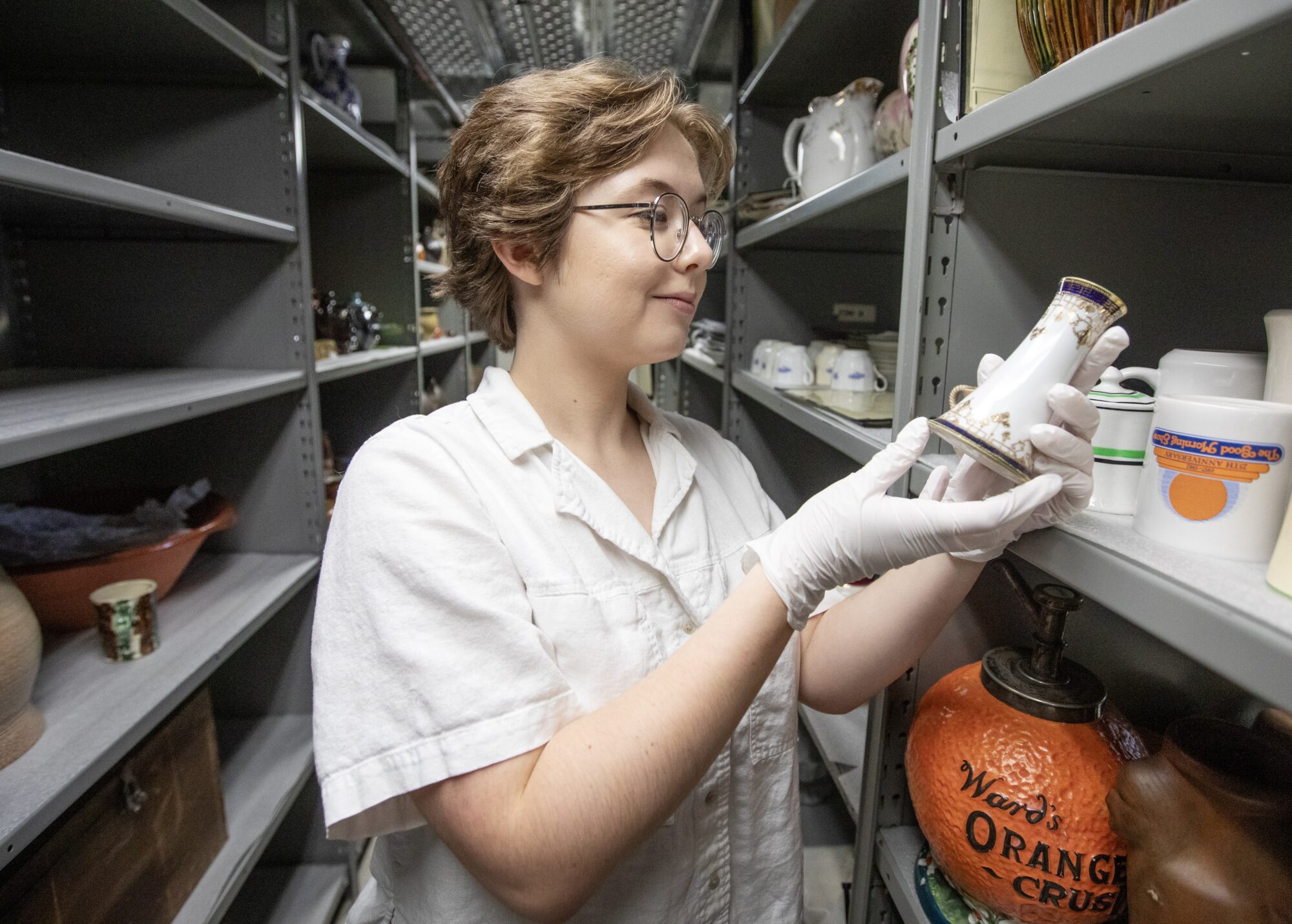
Items Ready for Adoption
It’s an important job, taking care of nearly 30,000 objects and 600,000 archival items that tell the diverse stories of Greensboro. So every year the museum’s collections team chooses special items in need of conservation work.
Donors can adopt one of these items by funding the costs of conservation treatments. Below are items currently needing your support.
See a list of objects that have been conserved through the Adopt an Object program.
-
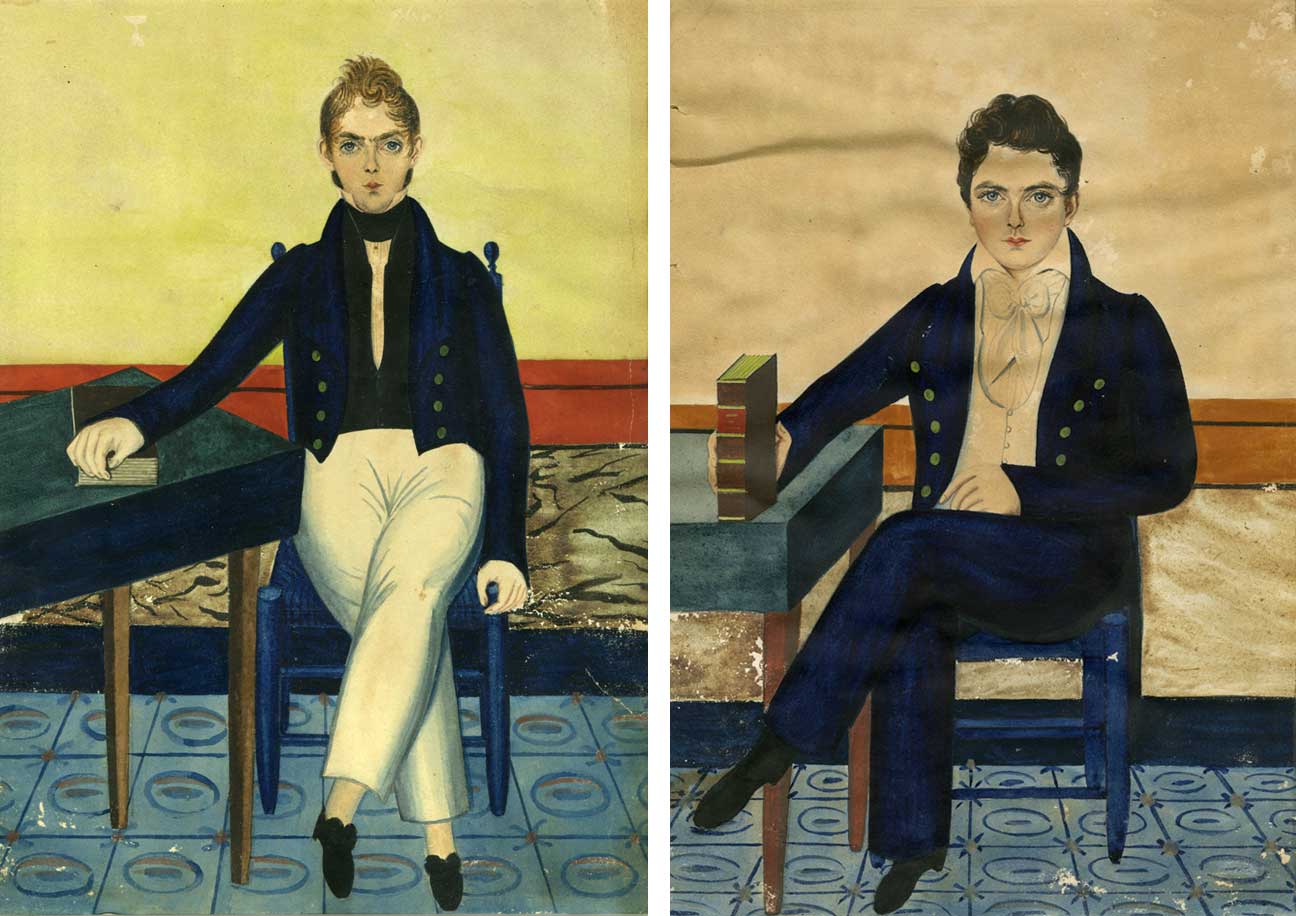 Watercolors of Dr. John Gillespie Hanner & Alfred Hanner, by the Guilford Limner, 1826
Watercolors of Dr. John Gillespie Hanner & Alfred Hanner, by the Guilford Limner, 1826 -
Estimated Conservation Cost: $1150
These watercolors are among over 90 attributed to the “Guilford Limner,” a traveling artist who produced much of his work in this area. In addition to displaying the artist’s skill, the paintings provide a window on life in Guilford County at the time through the clothing, furniture, and items held by the subjects. They need surface cleaning and paper repairs. (1982.1089.9-10)
-
 The Red String, May 15, 1867
The Red String, May 15, 1867 -
Estimated Cost of Conservation: $1600
This issue is likely the only surviving copy of this short-lived newspaper published by Albion Tourgée and the Heroes of America, a pro-Union organization, to spread Republican ideology. Neither it nor Tourgée’s Union Register reached a large enough audience to be effective or profitable. The newspaper needs surface cleaning, treatment to reduce degradation products in the paper and discoloration, deacidification, and paper repairs. (2021.22.1)
Support
How to Adopt an Object
Donations can be made online or via check, credit card or pledge. Questions? Contact Museum Director Carol Ghiorsi Hart at 336.373.2306.
Adopt an Object
Adopted & Conserved
Since 2013, generous donors have funded the conservation of historical treasures throughout the museum through Adopt an Object.
-
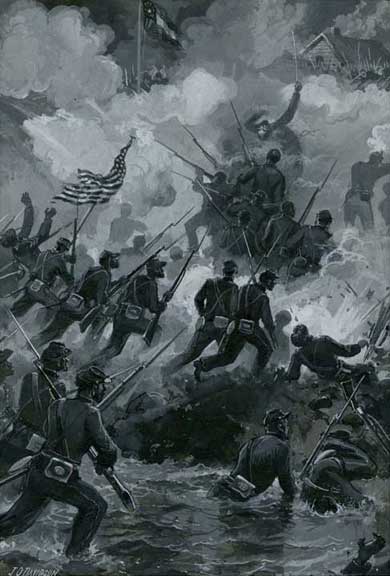 Gouaches of Civil War scenes, late 19th century
Gouaches of Civil War scenes, late 19th century -
Estimated Conservation Cost: $1200
Acquired and displayed with the John and Isabelle Murphy Confederate Firearms Collection from 1999-2017, these gouaches include: “The Night Attack on Fort Wagner” by the 54th Massachusetts Colored Troops, by J.O. Davidson; “Opening of the Battle of Frayser’s Farm,” by Alfred R. Waud; and “Confederate Line waiting orders in the Wilderness,” by William Ludlow Sheppard. They need to be separated from the acidic backings or mattes to which they are adhered. (Mss. Coll. #170)
-
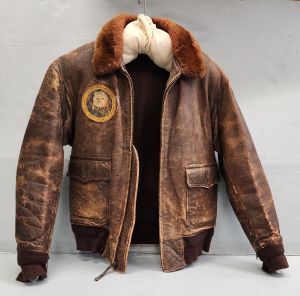 Marines Bomber Jacket, 1943
Marines Bomber Jacket, 1943 -
Melvin Reich wore this jacket while serving in Marine Aircraft Group 31, commissioned at Cherry Point, NC, in 1943. They left the United States for the Pacific in September 1943 and were the first to operate on the Japanese mainland at Yokosuka. Conservation work completed: consolidating and protecting leather, treating fabric, and stabilizing sleeves and hem. (1995.100.5)
-
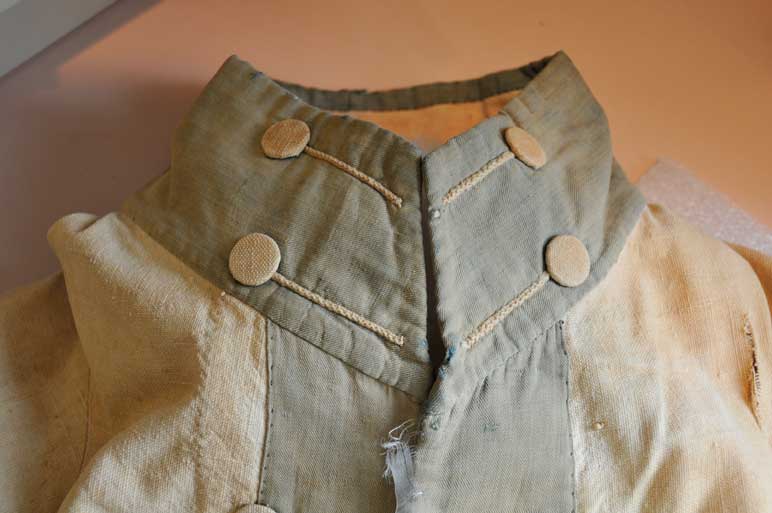 Mark Iddings Clothing, circa 1814
Mark Iddings Clothing, circa 1814 -
Estimated Conservation Cost: $2200
According to Armfield family tradition, this clothing was a militia uniform worn by their ancestor Mark Iddings (1784-1848), a Guilford County Quaker. An attractive homespun cotton tailcoat, a linen neck stock and drop-front cotton pants form the ensemble. (1939.510)
-
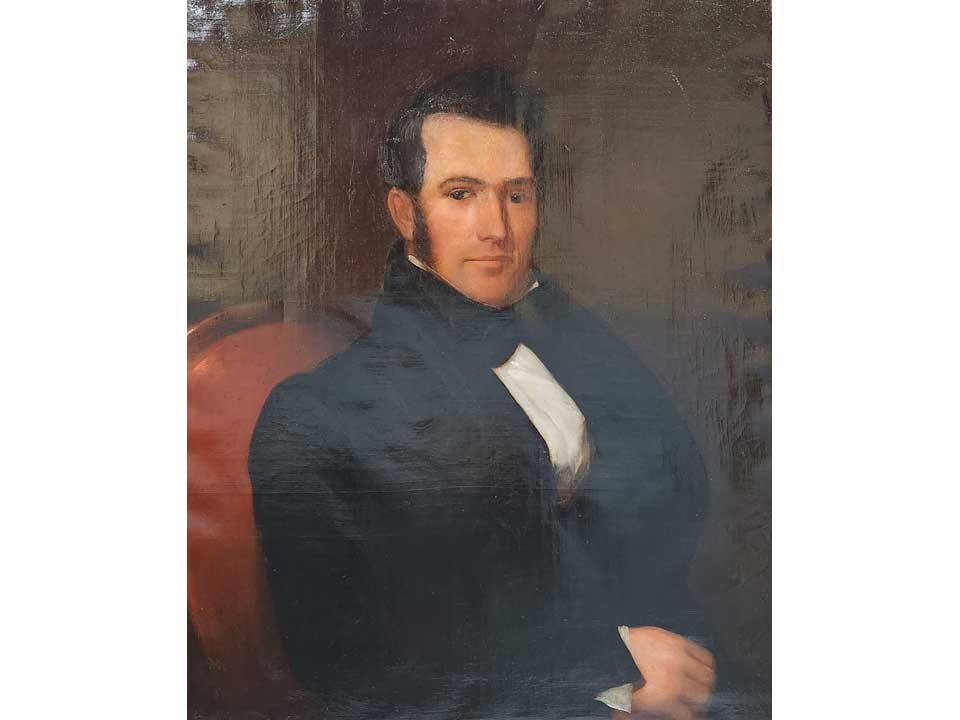 Portrait of “Jed” Lindsay, circa 1840
Portrait of “Jed” Lindsay, circa 1840 -
Estimated Conservation Cost: $2000
This oil painting on canvas by an unknown artist was donated to the museum in 2018. Its subject, Jeduthan “Jed” Harper Lindsay (1806-1881), was a member of First Presbyterian Church. He and his brother Jesse gave land for the church building and cemetery. Both are buried in the cemetery, as are their parents. (2019.11.1)
-
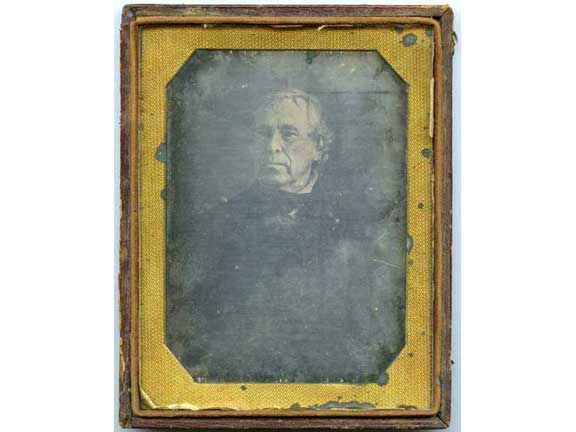 Zachary Taylor Daguerreotype, circa 1847
Zachary Taylor Daguerreotype, circa 1847 -
Estimated Conservation Cost: $1550
This daguerreotype of President Zachary Taylor is likely among the earliest photographs of him, probably taken soon after his return from the Mexican War. Although it shows Taylor in civilian dress, it became the basis for an engraving of him in military uniform. The rare daguerreotype is contained in a pressed leather case by William Shew of Philadelphia. (1973.208.1)
-
 Journal of the Convention of the State of North-Carolina, 1789
Journal of the Convention of the State of North-Carolina, 1789 -
Estimated Conservation Cost: $3200
This document contains the proceedings of the North Carolina convention held in Fayetteville to debate and approve the U.S. Constitution. It lists the delegates by county, details what happened on each day, and includes the text of the U.S. Constitution along with how each delegate voted. (1973.209.3)
-
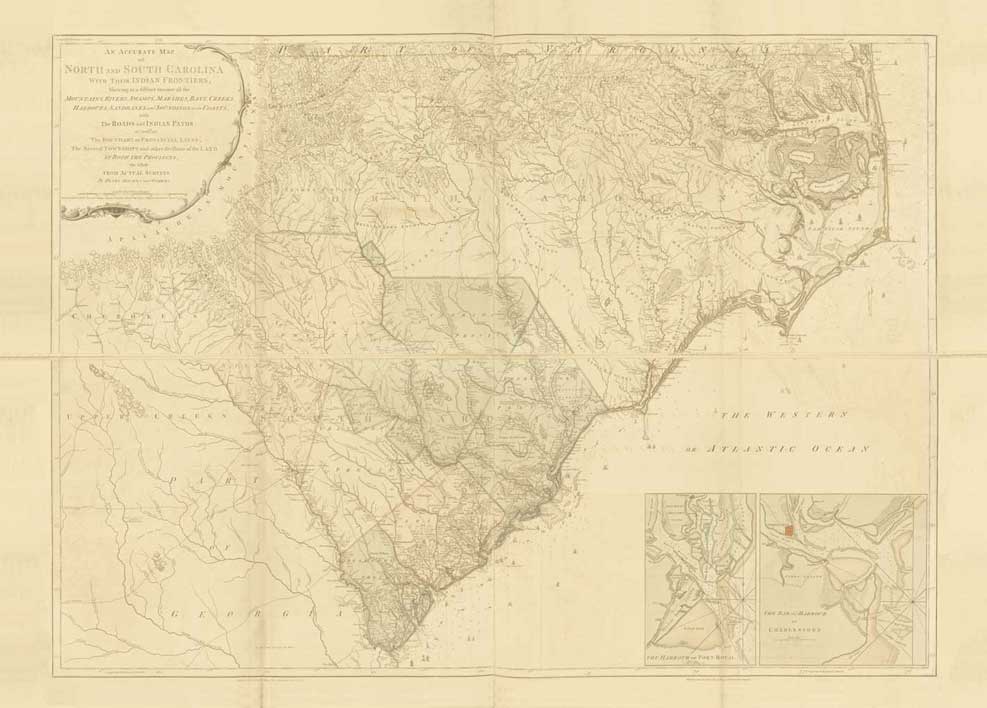 Map of North and South Carolina, 1775
Map of North and South Carolina, 1775 -
Estimated Conservation Cost: $1600
Drawn by Henry Mouzon Jr., this map was used extensively by American, British and French forces during the American Revolution. General Nathanael Greene and Lord Charles Cornwallis surely studied their copies closely before the Battle of Guilford Courthouse on March 15, 1781, and the Mouzon map continued to be the best source of information about the Carolinas for several decades after the war. (1976.5.1)
-
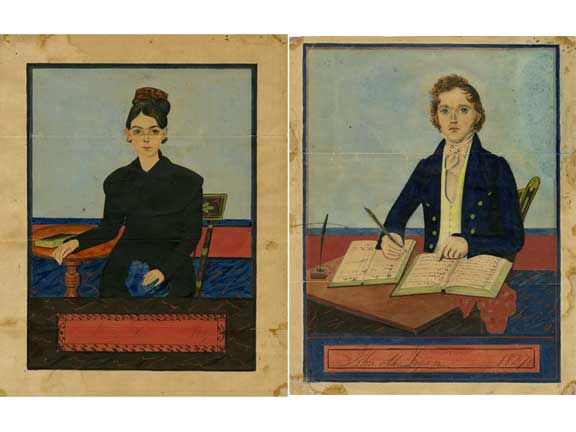 Watercolors of John & Nancy Logan, by the Guilford Limner, 1827
Watercolors of John & Nancy Logan, by the Guilford Limner, 1827 -
Estimated Conservation Cost: $975
These watercolors are among over 90 attributed to the “Guilford Limner,” a traveling artist who produced much of his work in this area. In addition to displaying the artist’s unique skill, these paintings provide a window on life in Guilford County at the time through clothing, furniture and the items held by the subjects. (1939.135.1; 1939.144)
-
 Disfranchisement Document, circa 1890
Disfranchisement Document, circa 1890 -
Estimated Conservation Cost: $550
This rare document contains the names of over 600 African American voters registered in Greensboro. The local Democratic Party apparently produced the list for registrars willing to prevent black citizens from voting, a right guaranteed to them by passage of the Fifteenth Amendment in 1870. Visit http://archives.greensborohistory. org/digital/disfranchisement for more information about the document and its historical context. (2011.18.1)
-
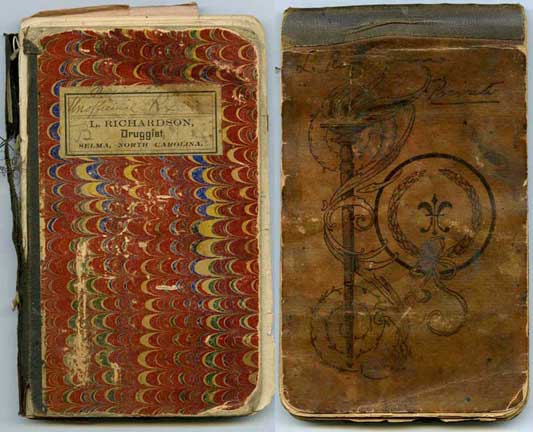 Lunsford Richardson Recipe Books, 1890s–1900s
Lunsford Richardson Recipe Books, 1890s–1900s -
Estimated Conservation Cost: $2700
Greensboro pharmacist and entrepreneur Lunsford Richardson recorded recipes for the cures with which he was experimenting in these two notebooks. They include his formulas for Chill Tonic, Toothache Drops and the Croup Salve later known as VapoRub. (1987.48.57)
-
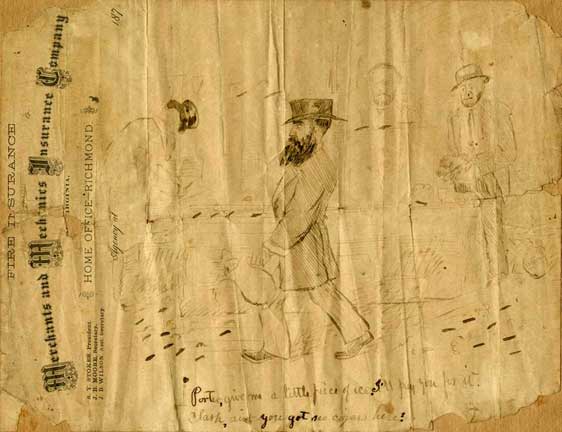 O. Henry Sketch of Porter Drugstore, 1879
O. Henry Sketch of Porter Drugstore, 1879 -
Estimated Cost of Conservation: $600
Although best known as a short story writer, O. Henry was also a skilled artist. This sketch shows the interior of his Uncle Clark Porter’s drugstore on S. Elm St., where he clerked as a boy. As Richardson & Fariss in the 1890s, this store was where Lunsford Richardson invented Vicks VapoRub. (2017.19.1)
-
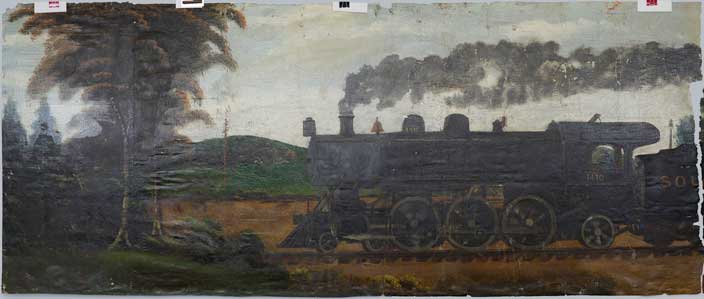 Southern Railway Passenger Train Mural, circa 1909
Southern Railway Passenger Train Mural, circa 1909 -
Estimated Conservation Cost: $29,000
Itinerant artist Harper Bond painted this mural in exchange for room and board at the Clegg Hotel at 368 S. Elm St. The artist’s skill and the mural’s subject attracted a great deal of interest even before it was completed. A newspaper described the artist’s effort as painstaking, for the mural measured more than 30 feet, covering the entire length of the coffee shop. After restoration, the mural was installed in the Denim Capital gallery. (1962.164.1)
-
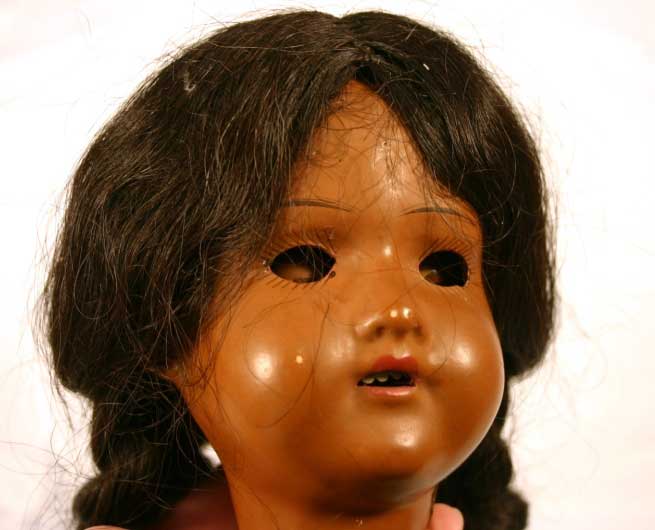 Dolls made by Trego Doll Mfg. Co. and Effanbee, circa 1920s
Dolls made by Trego Doll Mfg. Co. and Effanbee, circa 1920s -
Estimated Conservation Cost: $2300
These rare dolls in their original clothes belonged to Anita Meares Rivers (1912-2010). A graduate of Hampton University with a degree in mathematics and a master’s degree from the University of Michigan, Rivers distinguished herself on the faculty at Bennett College and North Carolina A&T State University, and was active in Greensboro’s civic community. (2013.12.2-4)
-
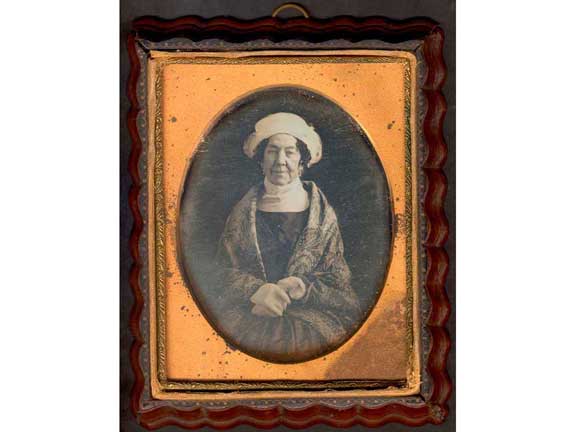 Dolley Madison Daguerreotypes by Mathew Brady, circa 1848
Dolley Madison Daguerreotypes by Mathew Brady, circa 1848 -
Estimated Conservation Cost: $2200
Dolley Madison, wearing one of her favorite turbans, posed at Mathew Brady’s studio during the last year of her life. Two rare daguerreotypes made that day were discovered in a Pennsylvania attic in the 1950s. The Greensboro-based Dolley Madison Memorial Association purchased the items and later donated them to the Museum. (1963.87.9-10)
-
 Brass Bugle, circa 1920
Brass Bugle, circa 1920 -
Estimated Conservation Cost: $425
This bugle was used by both the African American Legion and the Veterans of Foreign Wars bands for parades and memorial services from the 1930s through the 1950s. It was originally owned by Lieutenant Robert S. Campbell, a World War I veteran who served in the 368th US Infantry Regiment. Later, as an employee at North Carolina A&T State University, Campbell was involved with the campus Drum and Bugle Corps. (2006.44.1)
-
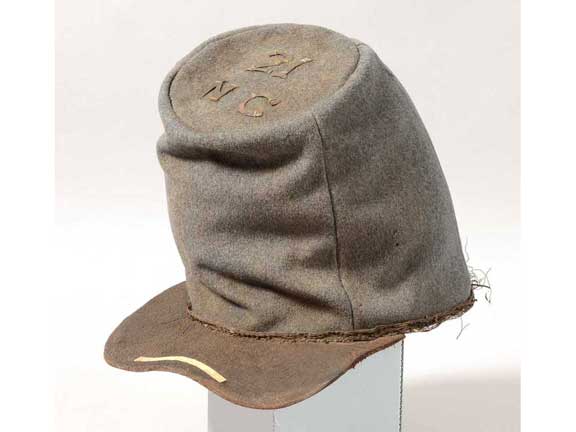 Civil War Kepi, circa 1862
Civil War Kepi, circa 1862 -
Estimated Conservation Cost: $1300
Lt. Col. William S. Rankin (1824-1899) wore this forage-style kepi, or cap, during his service in the Confederate Army. Enlisted with the 21st NC Regiment, Co. M, known as the Dixie Boys, Rankin participated in many major battles, and was wounded and captured at Gettysburg. The metal “21 NC” sewn to the crown may have been added by Rankin after the war. (1989.61.1)
-
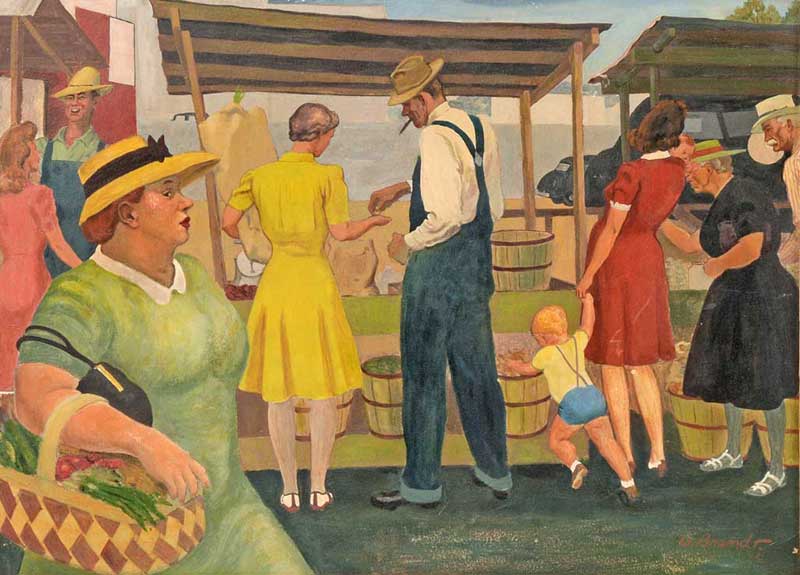 Watercolor Painting by Warren Brandt, 1942
Watercolor Painting by Warren Brandt, 1942 -
Estimated Conservation Cost: $825
Born in Greensboro, Warren Brandt (1918-2002) moved to New York after high school, attended Pratt Institute at night, studied at the Art Students League and was an official portraitist in the Army during World War II. A renowned American painter with work in art collections around the world, this painting depicts a busy day at a downtown Greensboro farmers’ market. (1974.60.1)
-
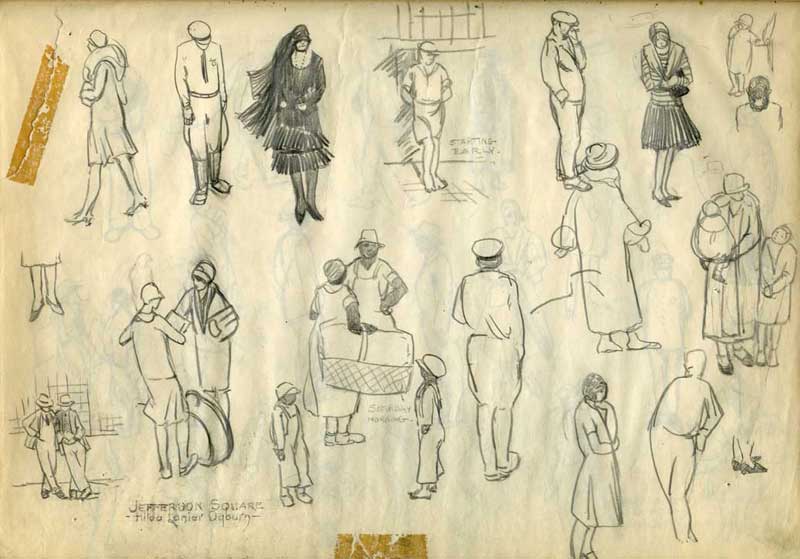 Hilda Lanier Ogburn Sketchbooks, circa 1920
Hilda Lanier Ogburn Sketchbooks, circa 1920 -
Estimated Conservation Cost: $1,700
After training at Converse College in South Carolina and the Art Students League in New York City, Hilda Lanier Ogburn (1895-1984) taught art in Greensboro, and took advantage of the view from her downtown studio to sketch the people she saw passing below. These were illustrations she would later use in her drawings, paintings and unique “scrap sketches.” (1975.89.4-5)
-
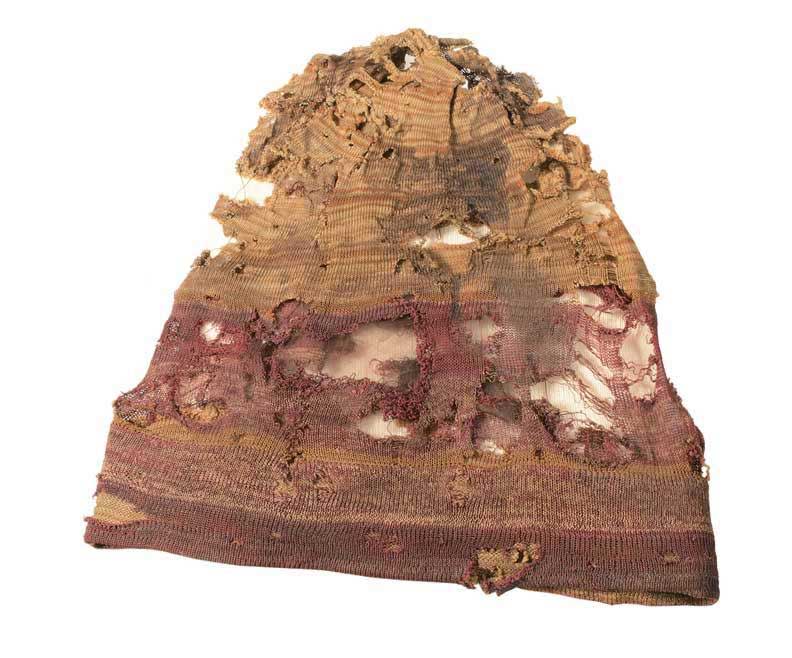 Revolutionary War Knit “Liberty” Cap, circa 1781
Revolutionary War Knit “Liberty” Cap, circa 1781 -
This knit cap was worn by local militia officer Captain Arthur Forbis, who fought and was mortally wounded at the Battle of Guilford Courthouse in 1781. One military historian commented that no similar cap from this era has survived. (1926.155.1)
How to Adopt an Object
Donations can be made ONLINE or via check, credit card or pledge. Questions? Contact Museum Director Carol Ghiorsi Hart at 336.373.2306.